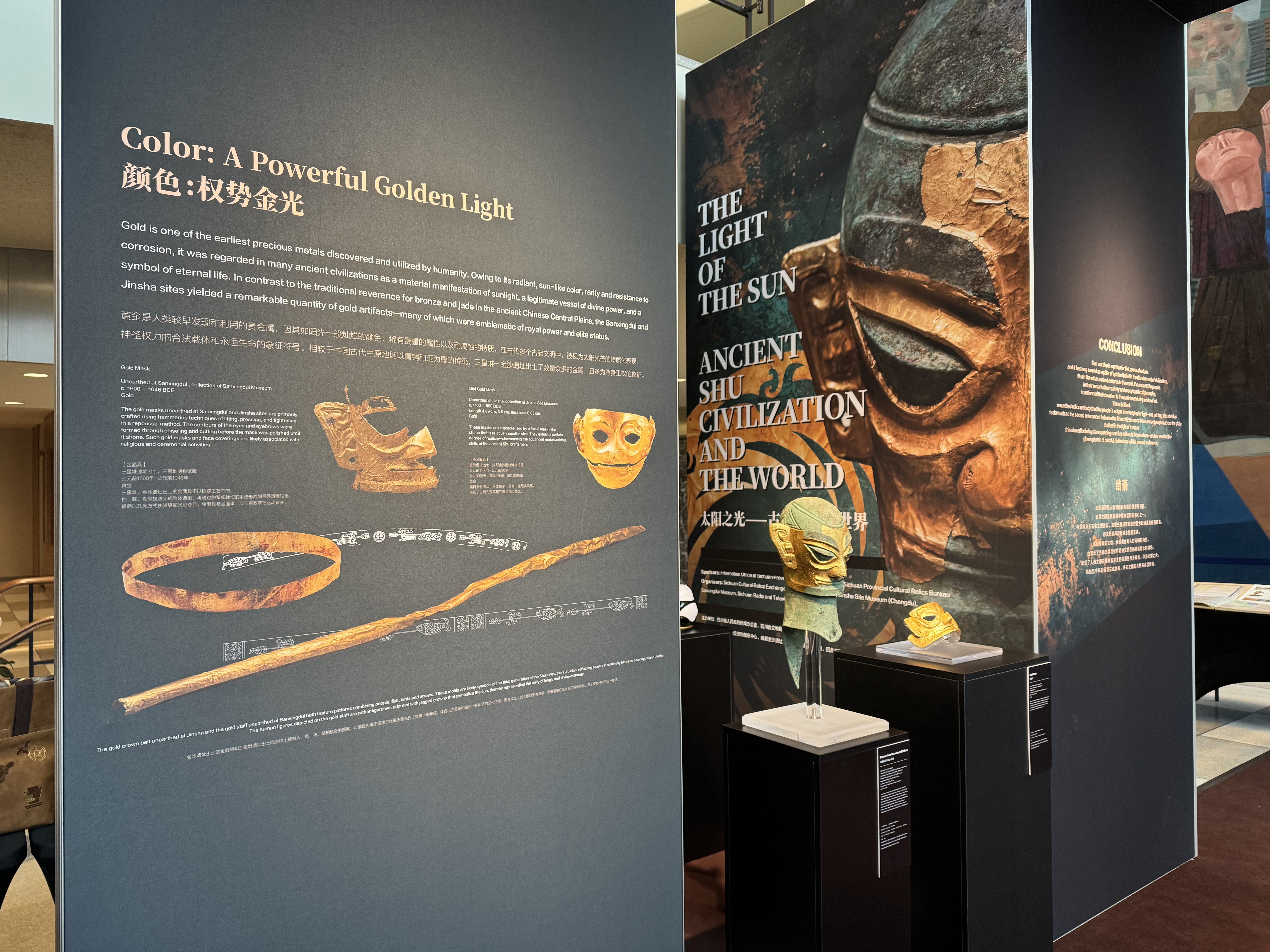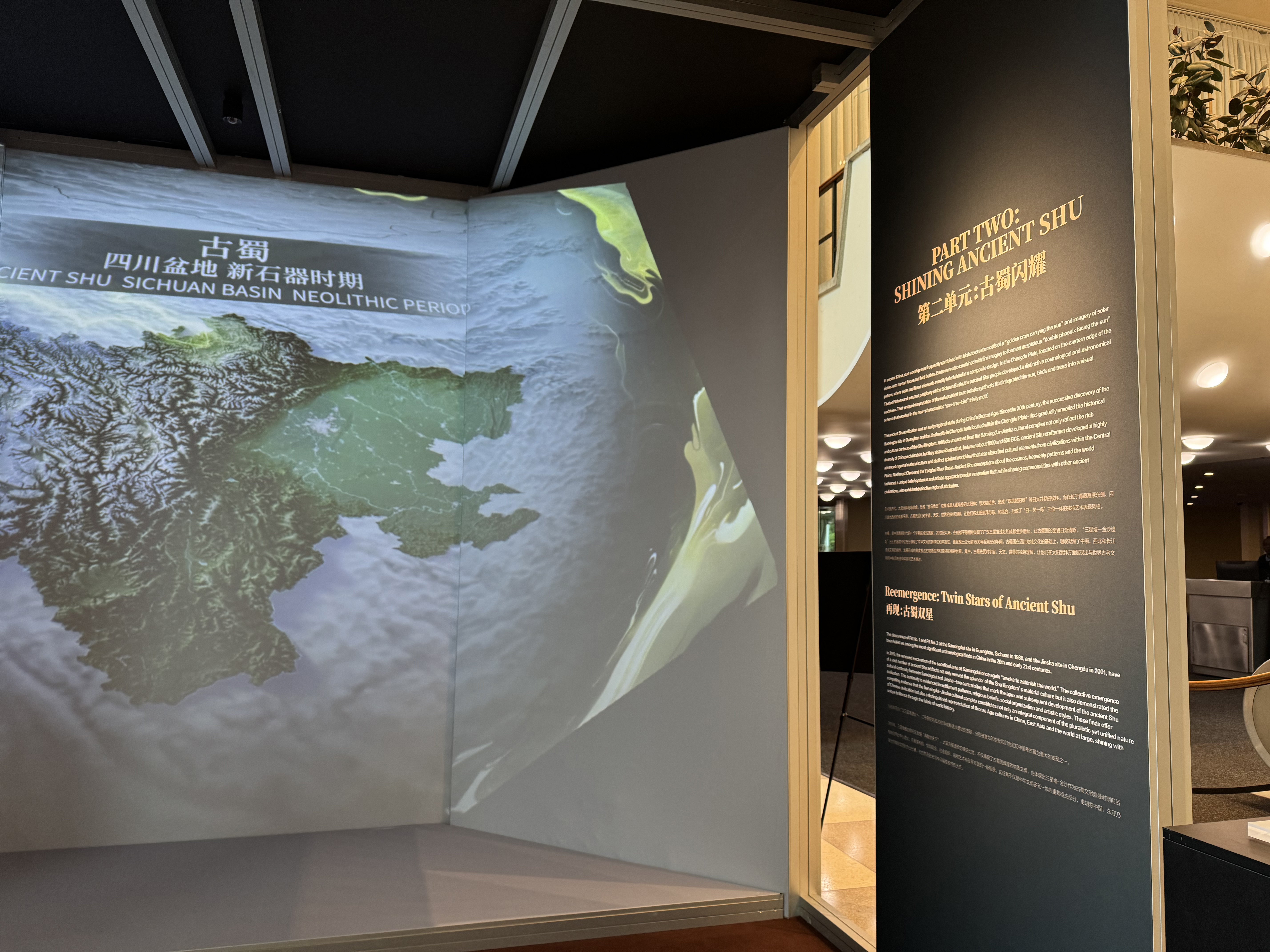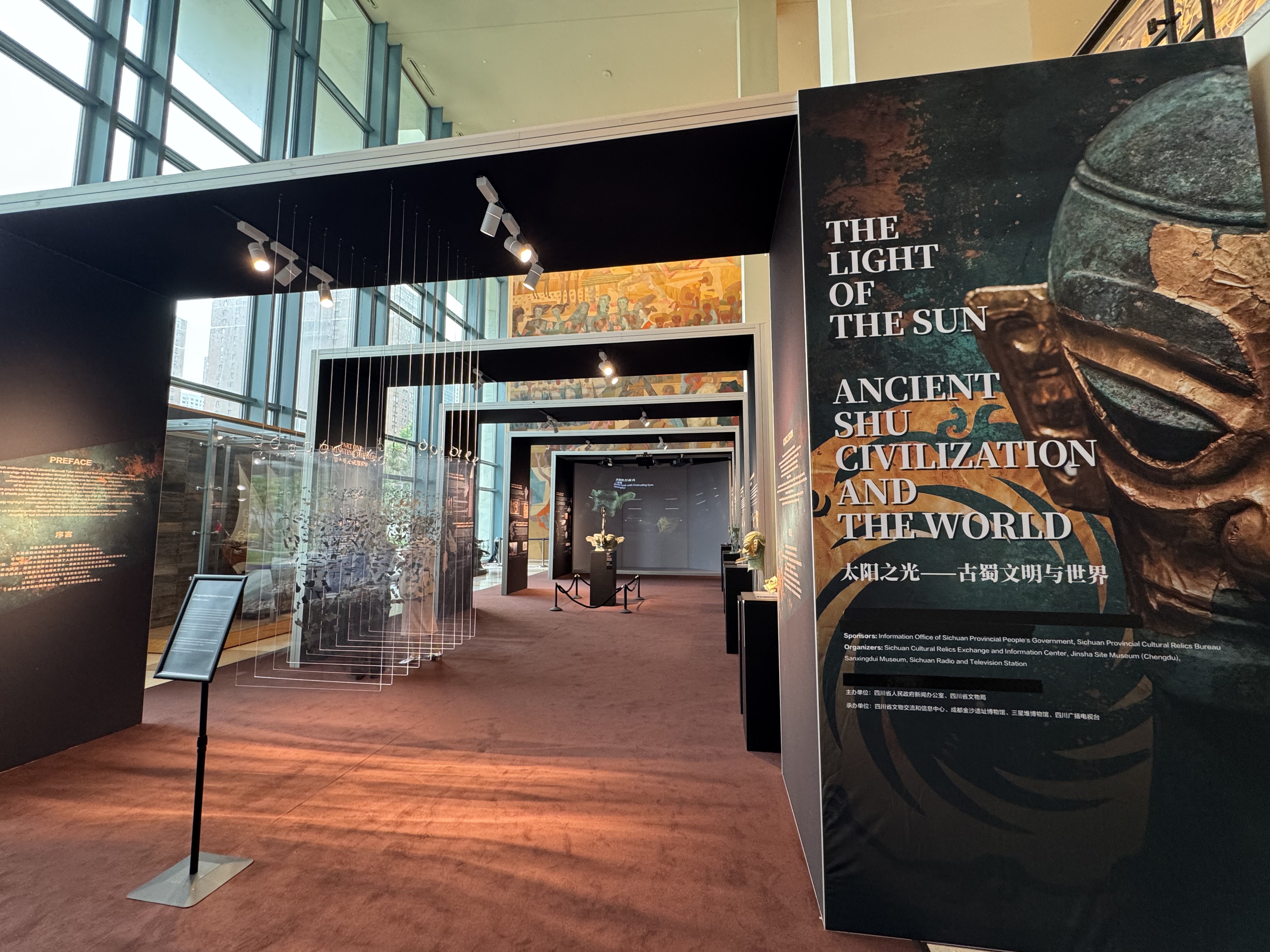The Exhibition "The Light of the Sun: Ancient Shu Civilization and the World" Commenced at the United Nations Headquarters in New York, USA
——Leveraging Dialogue among Civilizations to Promote Global Exchange and Mutual Learning of Civilizations
2025-06-10 15:46:54 by Sichuan International Communication Center
On June 9, 2025, at 5:30 PM local time in New York, the exhibition "The Light of the Sun: Ancient Shu Civilization and the World" was grandly inaugurated at the United Nations Headquarters in New York, USA. Hosted by the Information Office of the People's Government of Sichuan Province and the Sichuan Provincial Cultural Heritage Administration, this event served as a supporting initiative for the "International Day of Dialogue among Civilizations". Ambassador Fu Cong, Permanent Representative of China to the United Nations, and Moratinos, United Nations Under-Secretary-General and High Representative for the United Nations Alliance of Civilizations, along with guests from China and abroad, including permanent representatives and delegates from various countries to the United Nations, attended the exhibition. Centered on the theme of sun worship, the exhibition connects the splendid heritage of the ancient Shu civilization and those of global civilizations. It showcases humanity's shared pursuit of light and life, while conveying the timeless theme of coexistence and mutual prosperity among civilizations.

The sun, a timeless symbol of light and life, has served as a spiritual totem for human civilization since ancient times. British anthropologist Edward Burnett Tylor once stated, "Wherever the sun shines, there is sun worship". Building on this shared belief across regions and cultures, the exhibition employs image and text display boards, replicas of cultural relics, art installations, multimedia interactions, and other installations to showcase the diverse forms of sun worship in global ancient civilizations, including ancient Egypt, Mesopotamia, ancient India, ancient Greece, and ancient China (exemplified by the ancient Shu civilization). Through these, it reveals humanity's reverence for natural forces and the rich diversity of artistic expression.
The exhibition is divided into two main thematic units. The first, "Illuminating the World", focuses on the sun worship of ancient civilizations worldwide, highlighting the central role of the sun in religion, power, and calendars through images of representative cultural relics, such as the Luxor Obelisks, the Stele of the Code of Hammurabi, and the Sun Temple at Konârak. The second unit, "Brilliance of Ancient Shu", offers a deep exploration of treasures unearthed from the Sanxingdui and Jinsha sites, including the bronze sacred tree, the Golden Sun Bird gold ornament, and the gold mask. It explains the mythological cosmology of the "sun-tree-bird" trinity in the ancient Shu civilization and its profound connections to related myths and legends in ancient China.

Ancient Shu Civilization: A Brilliant Chapter of the Diverse yet Unified Chinese Civilization
The ancient Shu civilization shines as a brilliant star in the "starry sky" of Chinese civilization. The cultural relics unearthed from the Sanxingdui and Jinsha sites not only confirm the highly advanced bronze civilization of ancient Shu but also reveal its exchanges and mutual learning with the civilizations of the Central Plains, the Yangtze River Basin, and even regional civilizations around the world. The exhibition highlights the "Golden Sun Bird gold ornament", a cornerstone of China's cultural heritage symbols. With its exquisite hollowed-out craftsmanship and rotating sun imagery, this gold ornament serves as a microcosm of the ancient Shu people's cosmology. Additionally, cultural relics such as the gold crown belt and the head of a person wearing a gold mask illustrate the significant characteristics of the ancient Shu political system and its unique belief system, which blended divine authority and royal power.

The ancient Shu civilization serves as a striking example of the diverse yet unified Chinese civilization. This exhibition, using the sun as a medium, seeks to demonstrate to the world that the dialogue between Chinese and global civilizations has never ceased and that humanity's aspirations for light converge and remain interconnected.

Technology Empowerment: Immersive Experience of Civilization Integration
To enhance the sense of participation among international audiences, the exhibition employs a combination of three-sided surround projections and dynamic floor projections as its medium, utilizing digital technologies such as glasses-free 3D and 3D animation to present the multimedia installation "Journey Back to Ancient Shu." By dynamically recreating the archaeological history and intricate details of cultural relics from the Sanxingdui and Jinsha sites, the exhibition vividly highlights the magnificence of these cornerstone sites of the Bronze Age Shu civilization in the upper reaches of the Yangtze River, immersing audiences in the glorious achievements of the ancient Shu civilization. Additionally, through interactive installations like VR headsets, audiences can instantly "travel" to the archaeological excavation site of the Jinsha site, experiencing the thrill of excavating cultural relics up close.

Civilizations' Mutual Learning: Dialogue from the Ancient Times to the Future
The exhibition "The Light of the Sun: Ancient Shu Civilization and the World" uses the sun as a medium to build a bridge for dialogue between the ancient Shu civilization and global civilizations, encouraging the pursuit of common ground while respecting differences. In today's globalized world, diverse civilizations are both gifts from history and treasures for the future. Held at the United Nations Headquarters in New York, USA, the exhibition carries the following profound significance:

Building a platform for dialogue: By integrating cultural relics with advanced technology, the exhibition creates an equitable platform for diverse civilizations to connect, allowing global audiences to directly experience the cultural charm of "appreciating each other's beauty while cherishing their own."
Deepening mutual learning and consensus: The side-by-side display of the ancient Shu civilization alongside world civilizations, such as ancient Egypt and Mesopotamia, highlights shared elements of the human spiritual world, offering insights into "harmony in diversity" to address global challenges.
Inspiring innovative vitality: Combining bronze birds with glasses-free 3D technology, the exhibition blends ancient and modern creations, showcasing the creative transformation of traditional culture in a contemporary context and establishing a new model for the inheritance and evolution of civilizations.
Civilizations thrive through exchange and grow richer through mutual learning. Transcending time and space, this dialogue of civilizations boosts mutual respect and harmonious coexistence among diverse cultures, injecting fresh momentum into building a community with a shared future for mankind.
